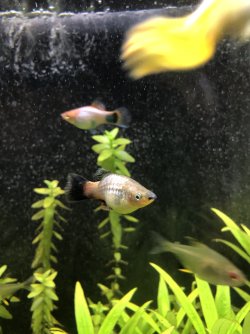FishFriend0
New Member
Hello,
Earlier today I noticed one of my platys with something that seems like fin rot ( pictures attached). She seems to be acting the same as usual and is eating fine. A few months ago I also noticed brown where the white is and injured looking fins. I assumed it was just her colour. I am not experienced with fin rot so if anybody knows what this could be it would greatly appreciated. I have some eSHa 2000 which says it will help with fin rot among other things.
Earlier today I noticed one of my platys with something that seems like fin rot ( pictures attached). She seems to be acting the same as usual and is eating fine. A few months ago I also noticed brown where the white is and injured looking fins. I assumed it was just her colour. I am not experienced with fin rot so if anybody knows what this could be it would greatly appreciated. I have some eSHa 2000 which says it will help with fin rot among other things.


